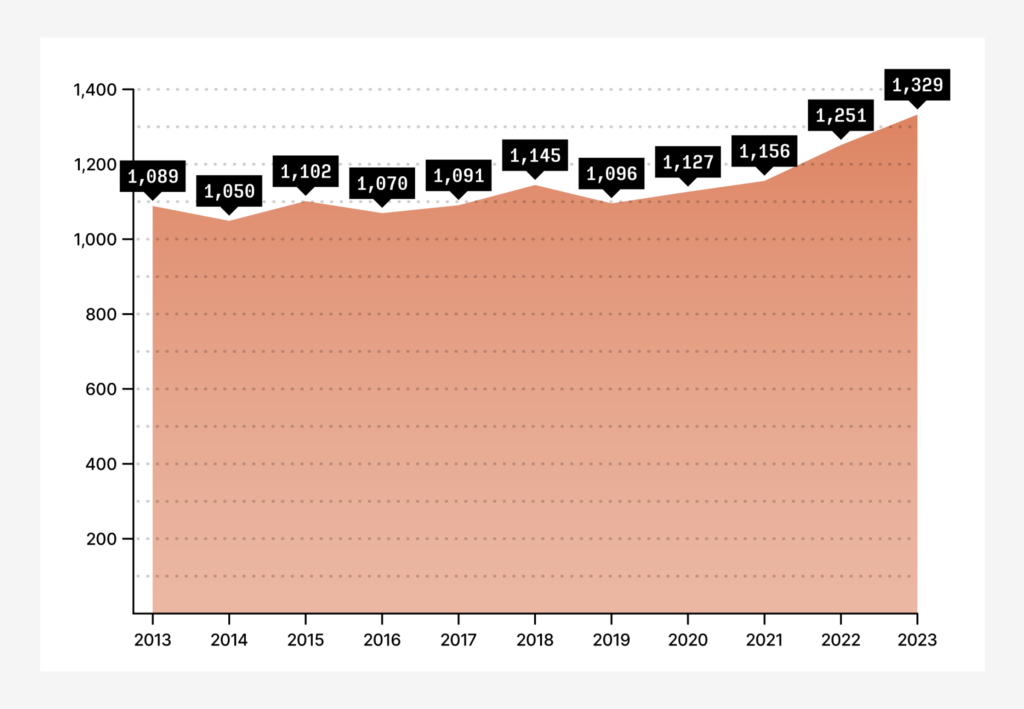Campaign Zero’s Mapping Police Violence (MPV) today released its 2023 analysis, showing it as the deadliest year since records began, with 1,329 people killed by law enforcement. This rise in police violence contrasts with the national decline in homicides and other violent crimes, underscoring a critical public safety threat that disproportionately affects Black and Brown communities.

Key Findings
- Deadliest Year: 2023 was the deadliest year since MPV began collecting data (2013), with 1,329 fatalities due to police violence. On average, U.S. law enforcement kills someone every 6.6 hours.
- Persistent Issue: There were only 14 days in the year where U.S. law enforcement did not fatally kill someone.
- Racial Disparities: Black and Brown individuals continue to be disproportionately affected.
Campaign Zero Statement
In 2023, 1,329 people were killed by U.S. law enforcement, marking it the deadliest year since CZ began collecting data. While the country experienced a decline in homicides and violent crime, our data shows that police violence continued to increase and continue to disproportionately impact Black and Brown people. It is important to further investigate the variation across agencies, states, and regions to better understand the complicated nature of the overall increase. There were just 14 days in the entire year where police did not kill someone in the United States, a troubling and undeniable fact that we have an epidemic in this country that requires us all to step up and protect our communities.
These numbers serve as a sobering reminder of the historical legacy of racist policing and the work left to do to end police violence and structural racism in this country. We remain committed to advancing solutions to bring us to a world beyond policing.
About the Data
As per our methodology, all incidents go through a multi-layered review process. It is likely that the number of incidents may increase in the coming months as a result of unique incidents that have been flagged as needing further analysis given the sensitivity of the circumstances.
To better understand the data generation process and methodology for the underlying data, please refer to MPV’s Data & Methodology Document.
